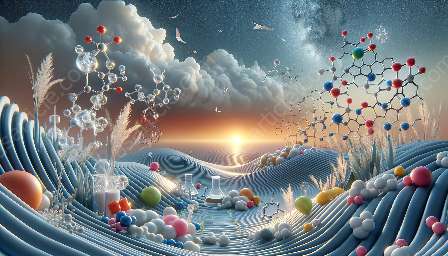Smart polymers, also known as stimuli-responsive polymers or intelligent polymers, are a class of materials with the ability to respond to changes in environmental conditions. These unique polymers have gained significant attention due to their remarkable characteristics and their potential applications in various fields, including polymer sciences.
Unique Characteristics of Smart Polymers
Smart polymers exhibit several distinct characteristics that set them apart from traditional polymers. These include:
- Responsiveness to External Stimuli: Smart polymers can undergo reversible changes in their properties in response to external stimuli such as temperature, pH, light, and electric fields. This responsiveness enables them to adapt to changing conditions and perform specific tasks.
- Biocompatibility: Many smart polymers are biocompatible, making them suitable for use in biomedical applications such as drug delivery systems, tissue engineering, and medical devices.
- Self-Healing Ability: Some smart polymers have the capacity to autonomously repair damage or cracks, offering potential applications in self-healing materials and coatings.
- Shape Memory: Certain smart polymers can memorize a specific shape and return to it when triggered by a particular stimulus, leading to applications in fields such as robotics and biomedical devices.
- Switchable Adhesion: Smart polymers can exhibit reversible adhesion properties, allowing them to adhere and release from surfaces in response to external triggers.
Applications in Polymer Sciences
The unique characteristics of smart polymers have opened up a wide range of applications in the field of polymer sciences. Some of the key applications include:
- Drug Delivery Systems: Smart polymers can be designed to respond to specific physiological conditions, enabling targeted and controlled release of drugs in the body.
- Bioinspired Materials: By mimicking natural processes such as self-healing and shape memory, smart polymers are contributing to the development of advanced bioinspired materials with diverse functions.
- Sensors and Actuators: Smart polymer-based sensors and actuators are being developed for various applications, such as detecting changes in environmental parameters and producing mechanical movements in response to stimuli.
- Environmental Remediation: Some smart polymers are being explored for applications in environmental remediation, including the removal of pollutants and contaminants from water and soil.
- Healthcare and Biomedical: Smart polymers have the potential to revolutionize drug delivery systems, implants, and diagnostic devices, leading to advancements in personalized medicine and targeted therapies.
- Materials Engineering: The development of self-healing materials and shape-memory polymers could result in more durable and adaptive materials for construction, aerospace, and automotive industries.
- Eco-Friendly Technologies: Smart polymers with environmental remediation capabilities can contribute to sustainable solutions for addressing pollution and waste management challenges.
- Consumer Goods: The responsive and adaptable nature of smart polymers could lead to innovative product designs in consumer goods, electronics, and textiles.
Potential Impact on Industries
The unique characteristics and versatile applications of smart polymers are expected to have a significant impact across various industries, including:
Conclusion
Smart polymers possess remarkable characteristics that make them a promising class of materials with diverse applications in polymer sciences and beyond. Their ability to adapt, respond, and perform specific functions in different environments holds great potential for addressing complex challenges in healthcare, materials engineering, environmental sustainability, and consumer industries.

